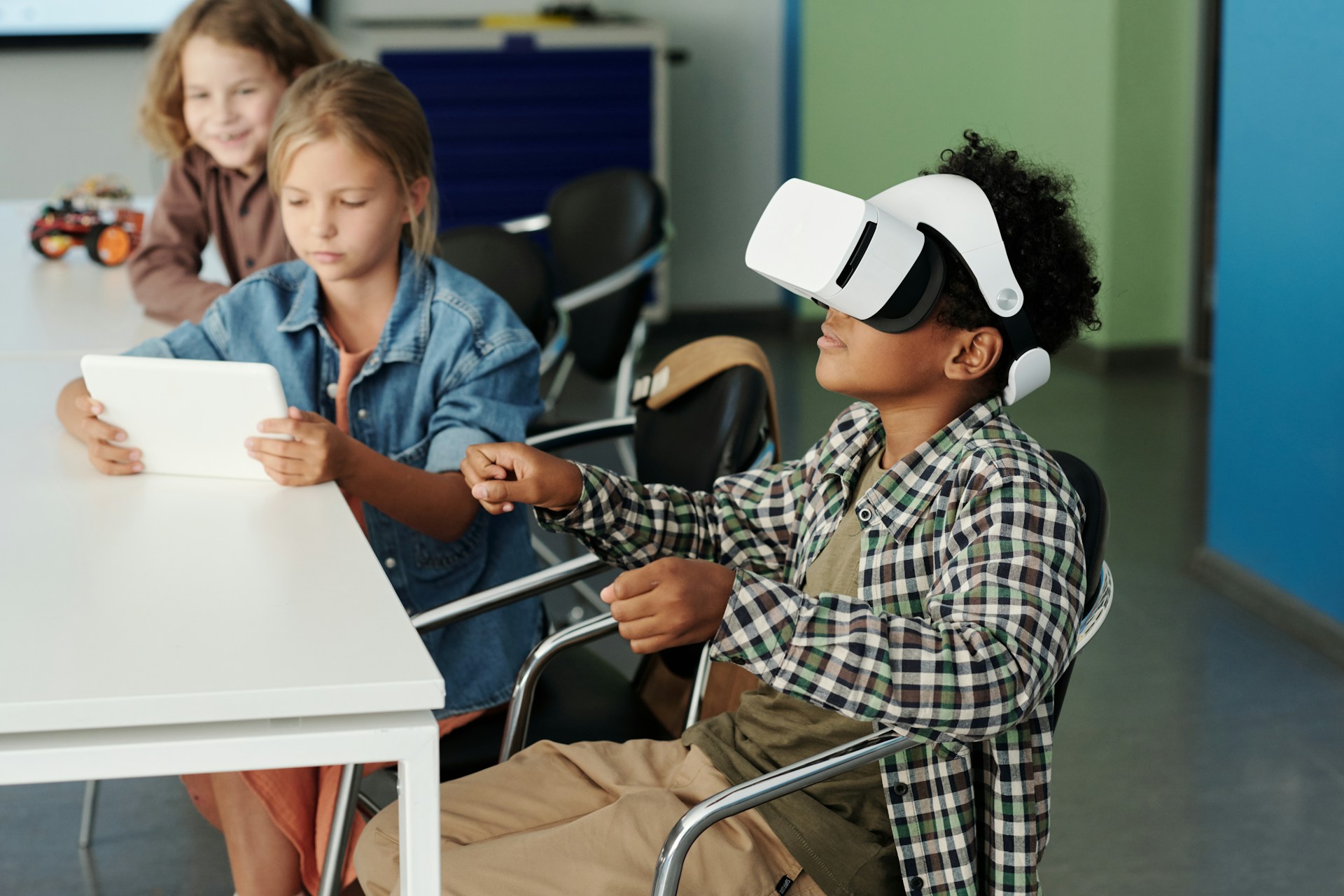
Virtual reality is quickly becoming a key tool in modern classrooms, offering students experiences that go beyond textbooks and lectures. Instead of learning about ideas through words alone, learners can step into digital worlds that bring concepts to life. VR transforms lessons into interactive adventures, helping students stay focused, curious, and engaged. By making learning active rather than passive, VR builds stronger understanding, boosts retention, and creates more meaningful learning moments.
Schools are constantly looking for ways to support different learning styles. VR stands out because it allows teachers to explain ideas more clearly and gives students the chance to explore concepts in ways that feel real. This combination of immersion and interaction creates learning experiences that are both fun and educational, helping students connect information to the real world. In addition, VR encourages learners to take initiative, explore new subjects, and even practice problem-solving independently.
Making Learning an Experience
Traditional classrooms often rely on listening, reading, or memorizing information, which may not work for every student. VR changes that by turning lessons into experiences that learners can see, hear, and interact with. A geography lesson can become a virtual journey across deserts, mountains, and oceans. A science lesson can transform into an exploration of the human body or a walk through the solar system. These immersive experiences help students understand complex topics more clearly and make the material feel less abstract.
VR is particularly effective for visual and hands-on learners. When students can manipulate objects or move through environments, they grasp ideas more easily. This reduces confusion, increases confidence, and encourages active participation. As students explore these virtual spaces, they also practice decision-making and critical thinking, which are essential skills for both school and life.
Boosting Engagement and Motivation
Keeping students motivated is a challenge for many teachers. VR naturally draws attention and curiosity, helping learners stay involved from the start. When students feel like participants rather than spectators, they engage more deeply with lessons.
Immersive experiences create strong memories. For instance, exploring a virtual rainforest is far more memorable than reading about it in a textbook. Students can observe plants and animals in their natural habitats, notice details they might miss in a picture, and interact with the environment to learn about ecosystems. This emotional connection makes learning stick and encourages students to explore the subject further. VR also turns schoolwork into a fun adventure, increasing students’ interest and willingness to learn.
Simplifying Complex Concepts
Some subjects are challenging to understand because they are abstract or highly technical. VR simplifies these concepts by showing them in action. Physics students can see energy transfer in motion, chemistry students can watch reactions safely, and math students can explore shapes and angles in 3D space. Being able to visualize and experiment makes abstract ideas concrete and easier to grasp.
Beyond science and math, VR benefits language and arts students, too. Learners can practice speaking in immersive environments, explore famous art museums, or even watch historical events unfold before them. These interactive experiences make learning more tangible, support memory retention, and help students feel more connected to the material.
Developing Empathy and Perspective
VR can enhance emotional learning by allowing students to experience life from different viewpoints. For example, a simulation might show daily life in another country, demonstrate challenges faced by people with disabilities, or illustrate environmental issues. By stepping into someone else’s shoes, students learn to appreciate diversity and build empathy.
Emotional learning through VR complements academic growth. It helps students develop skills like understanding others, managing emotions, and making ethical decisions. These abilities are just as important as academic knowledge and help students succeed in both school and personal life.
Encouraging Collaboration and Teamwork
VR does not have to be a solo activity. Many programs allow multiple students to enter the same virtual space and work together. Collaborative VR experiences teach communication, teamwork, and problem-solving skills. Students can complete missions, build virtual models, or solve challenges as a group, which makes learning more social and enjoyable.
Teachers can structure activities so students share responsibilities, discuss strategies, and reflect on their results together. This not only improves learning outcomes but also fosters social skills and confidence. Working in VR encourages cooperation and helps students become more comfortable communicating in diverse settings.
Preparing Students for the Future
Technology is an essential part of almost every career today. Using VR in education exposes students to modern tools early, helping them develop digital literacy, creativity, and problem-solving skills. They become comfortable navigating virtual environments, experimenting with ideas, and applying knowledge in innovative ways.
VR prepares students for future careers in engineering, medicine, design, and architecture. Even fields outside technology increasingly use VR for training, simulations, and planning. By integrating VR into the classroom, schools equip students with skills they can use long after graduation, making them more adaptable and confident in a changing world.
Expanding Access and Opportunities
VR also promotes equal learning opportunities. Students with learning differences, attention challenges, or limited access to resources benefit from the controlled and adaptable environment VR provides. Lessons can be repeated, slowed down, or adjusted to meet specific needs, giving every student a fair chance to succeed.
Additionally, VR allows students to explore places they may never visit in real life, from historical landmarks and natural ecosystems to factories and research labs. By offering these experiences virtually, schools can bridge access gaps, inspire curiosity, and make education more inclusive.
Unlocking the Potential of Modern Education
Virtual reality is transforming education by making lessons interactive, memorable, and meaningful. It helps students understand complex concepts, develop collaboration and empathy, and prepare for future careers. By combining imagination with learning, VR allows students to experience knowledge rather than just read about it. As more schools adopt VR technology, students gain tools and confidence that help them succeed both in and out of the classroom. With immersive, interactive lessons, the future of learning is more engaging and equitable than ever before.